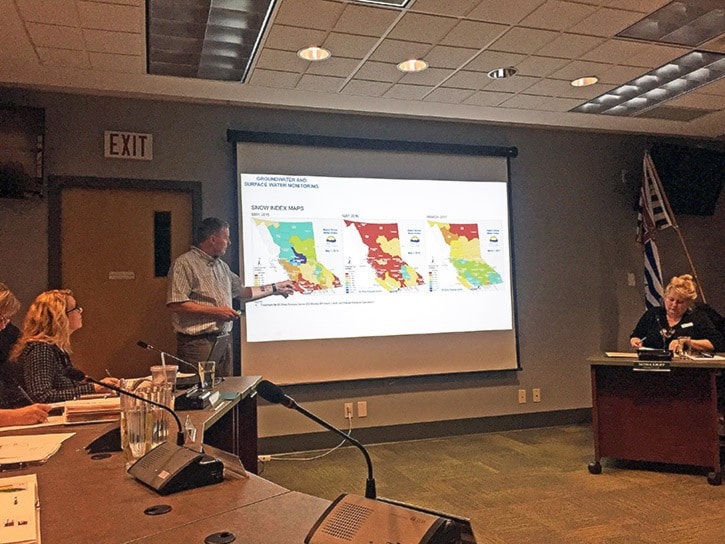Nestle Waters Canada’s natural resources manager Bruce Lauerman presented to council on March 13 to send the message that they have policies and monitoring in place to ensure their operations do not threaten Hope’s water supply.
Lauerman pointed to his data as evidence that Nestle has operated responsibly. He estimates that of the 30,000 gallons per minute that flow through where Nestle extracts water, they only take 150 gallons per minute.
“If we were not withdrawing water, I don’t think the environment would even know it,” said Lauerman. “I can’t measure any impact.”
Lauerman also used data to dispel the myth that Nestle has acted irresponsibly during the 2015 drought.
“I know that during 2015 people were saying, well, drought’s been implemented in British Columbia and that municipalities such as Hope are required to take certain actions to restrict water usage and water conservation and yet Nestle is continuing to produce water as if there’s no drought,” said Lauerman. “Well, to me there’s no drought.”
His data from a monitoring well showed that water levels were high in 2015 despite low snow levels and low Coquihalla River discharge.
Lauerman explained that the local aquifer is buffered and he expects that it would take two or three years of extended poor snowfall and precipitation to affect the aquifer. He added that the effect of precipitation will only be seen on the Coquihalla River months after the event.
“We keep a very close eye on the situation up there and if there’s any reason to curtain our operations we’ll do it,” said Lauerman.
